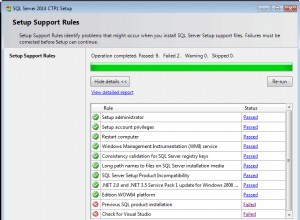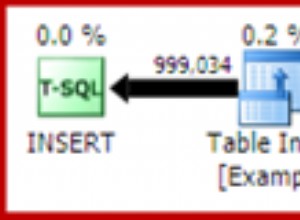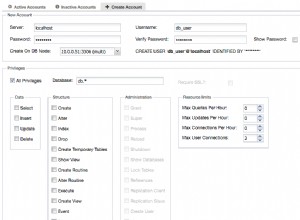"ALL_TAB_COLUMNS " è un systable, ha tutti i tipi di dati delle colonne della tabella ecc.
"USER_TAB_COLUMNS " è un systable, ha tutti i tipi di dati delle colonne della tabella ecc. (il cui proprietario è l'utente corrente). (Grazie Rene)
Un esempio:
SET SERVEROUTPUT ON SIZE 100000 -- maybe you have a lot of table and columns
DECLARE
matches INTEGER;
BEGIN
FOR columns IN (SELECT table_name, column_name FROM user_tab_columns where data_type = 'VARCHAR2') LOOP
EXECUTE IMMEDIATE
'SELECT COUNT(*) FROM '||t.table_name||' WHERE instr('||t.column_name||' , :1) > 0'
INTO matches
USING 'What you search';
IF matches > 0 THEN
dbms_output.put_line( t.table_name ||' '||t.column_name||' '||matches );
END IF;
END LOOP;
END;
/
questa query produrrà nome_tabella '' nome_colonna'' e conterà, se hai nomi di colonne e tabelle standard, puoi modificare la query come IF colonne> 0 quindi scrivere una query UNION in loop e restituire il cursore, o restituire una tabella,




